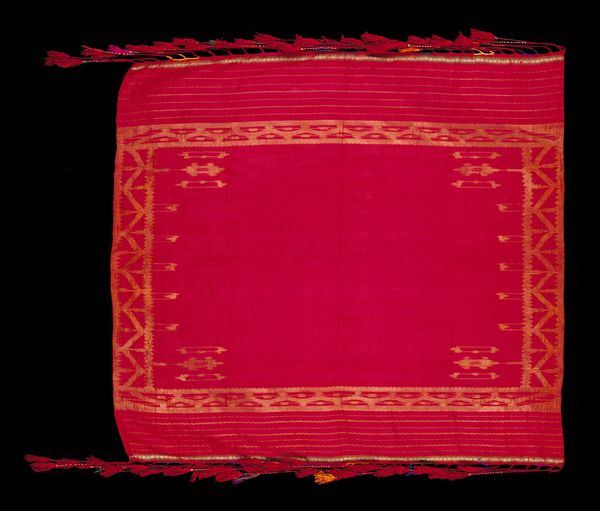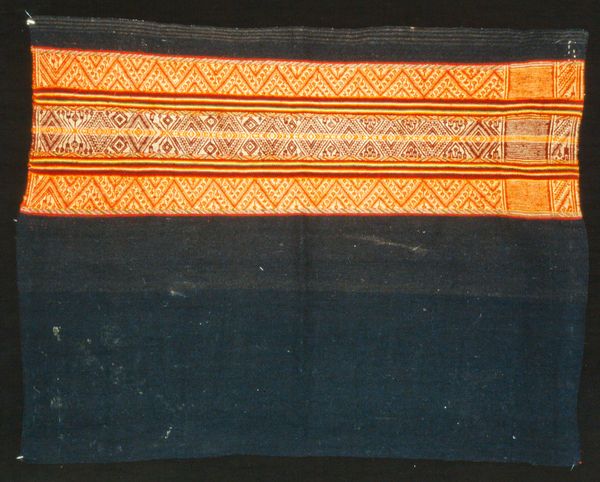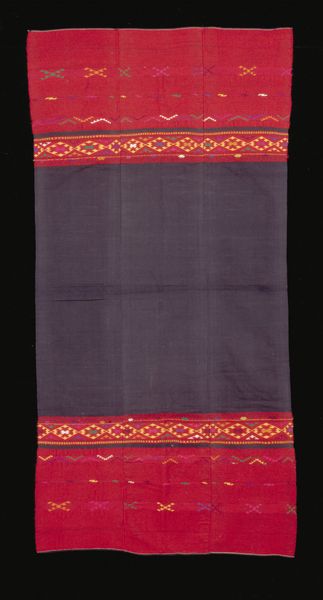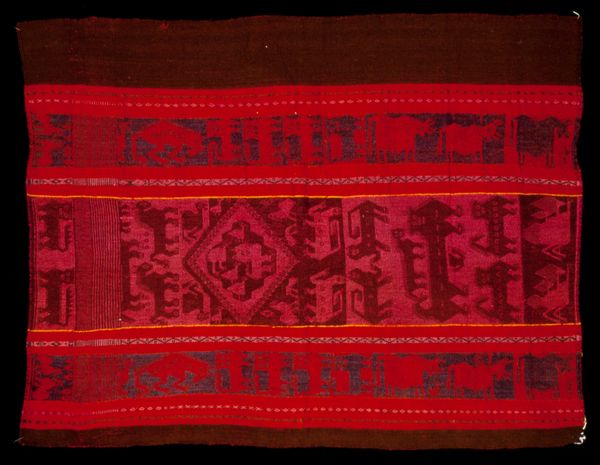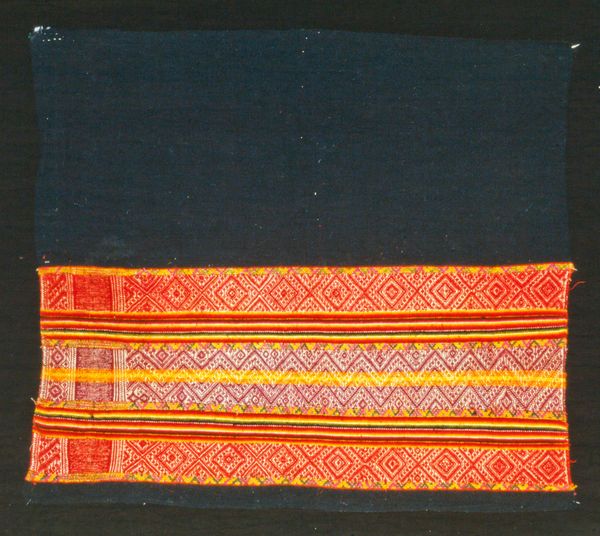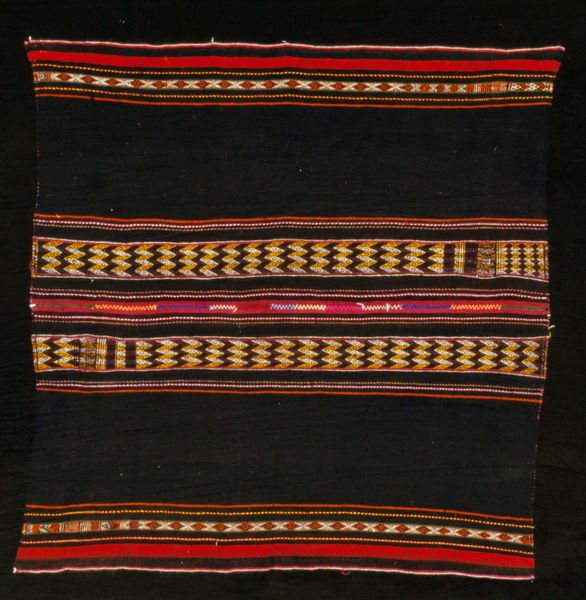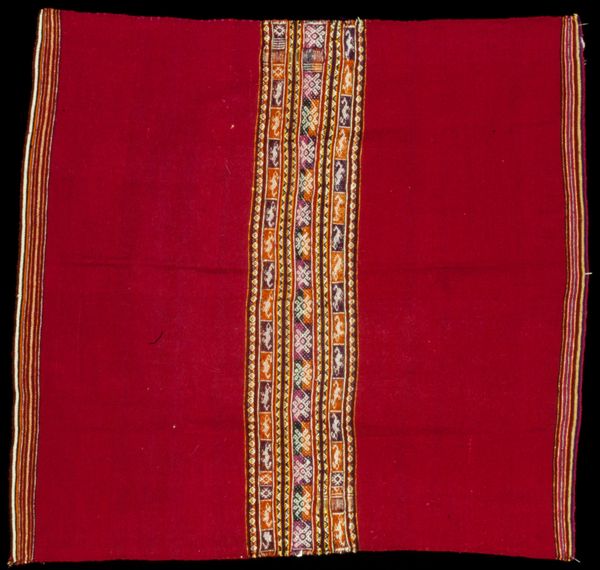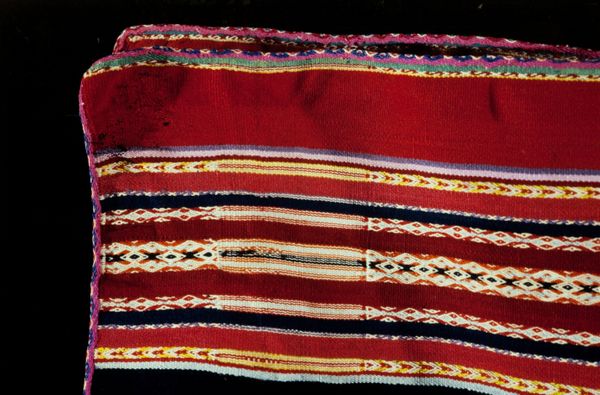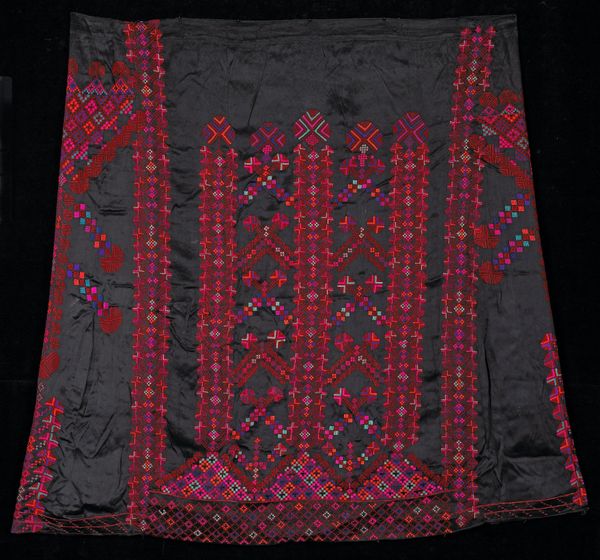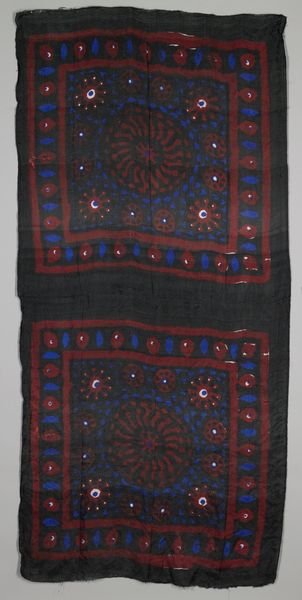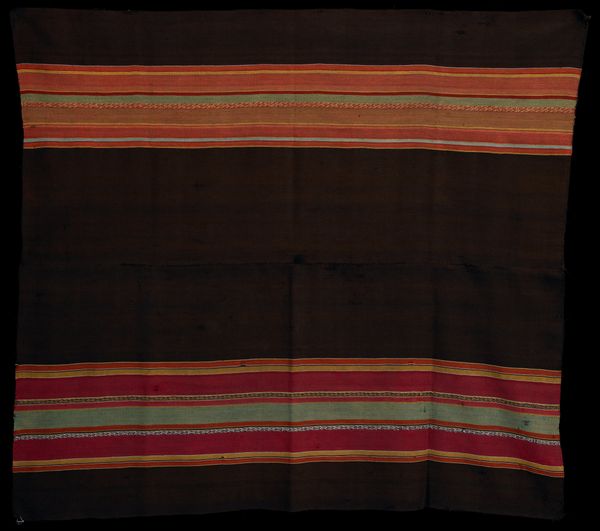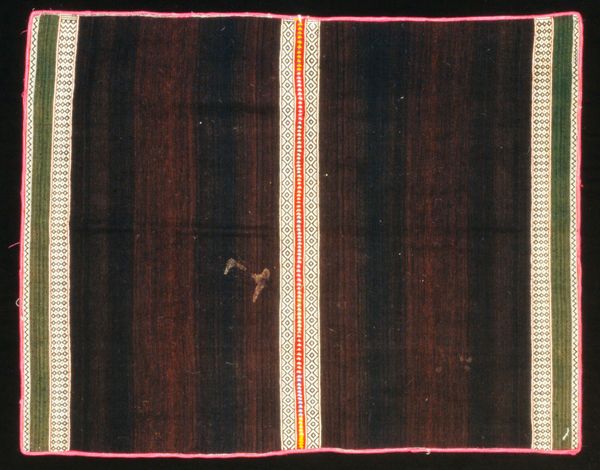
silk, weaving, textile
#
silk
#
asian-art
#
weaving
#
textile
#
geometric pattern
#
geometric
#
pattern repetition
#
textile design
Dimensions: 206 x 45 1/2 in. (523.24 x 115.6 cm)
Copyright: Public Domain
Curator: Here we have an exquisite Sari, believed to originate from around the 20th century. The Minneapolis Institute of Art houses this exceptional example of textile artistry. It's crafted from silk using weaving techniques, representing the pinnacle of textile design within Asian art traditions. Editor: Oh, wow. The combination of that intense, almost electric blue against the earthy red just vibrates. It feels both grounded and incredibly alive, like watching a sunset over a field. Curator: Indeed. The piece incorporates geometric patterns with recurring animal motifs, particularly along the lower border, suggesting cultural narratives woven into its design. It makes you think about the stories embedded in textiles, doesn't it? Editor: Absolutely. It’s like a visual poem. I love how those little elephant figures marching across the bottom create this whimsical sense of movement. I imagine the person who wore this dancing or walking, those elephants going on their own tiny parade. Curator: Right. And such textiles in India weren't simply worn; they communicated status, told histories, and reinforced social bonds. Consider the craftsmanship required, passed down through generations. Editor: Thinking of the labor and time involved to produce just one like this—and knowing it would become part of someone’s personal history… It really makes you feel connected to all the human hands that brought this into existence, and all the lives it might have touched. I want to touch it, feel the silk! Curator: Regrettably, we can’t indulge, but I agree. Textiles especially provide tangible links across time. How garments transform in social practice speaks to wider stories around power, production, and display. Editor: So true! Even from just glancing at the color palette and patterns, you glean some sense about identity, time period, rituals and occasions the item played a role in. It's an encapsulation of collective experience and identity, which it carries wherever it may go. Curator: Precisely. Reflecting on "Sari", it strikes me how a single item can act as a vessel of social and cultural information and inspire such contemplation! Editor: I agree! And maybe invite a little daydreaming about who owned it, where they lived, what songs they might have sang...
Comments
No comments
Be the first to comment and join the conversation on the ultimate creative platform.
